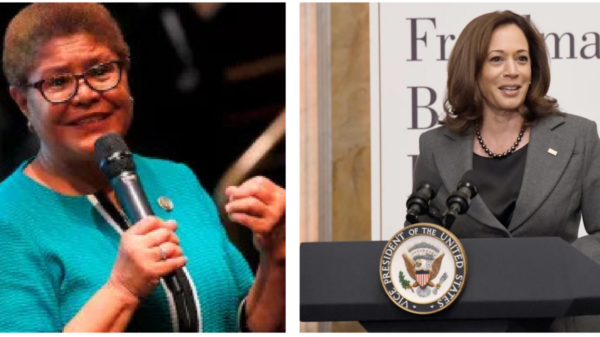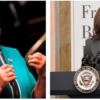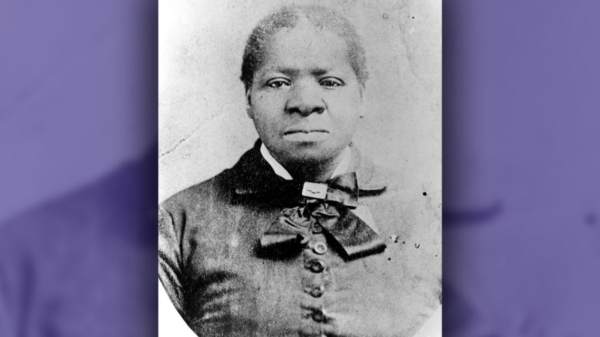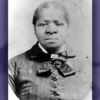Since the 1960s, studies have shown that heavy-handed policing and militarized responses tend to make protests more volatile — not less.
By Jamiles Lartey
The Marshall Project
https://www.themarshallproject.org/

Roughly 2,000 National Guard troops continued patrolling Los Angeles on Monday under an order from President Donald Trump following weekend protests in response to federal immigration sweeps. It was the first time the federal government had activated the guard over the objections of local officials in 60 years. Without providing any evidence, Trump claimed on his Truth Social platform that the protesters are “paid insurrectionists.”
California Gov. Gavin Newsom and Los Angeles Mayor Karen Bass condemned the deployment, describing it as federal overreach and a dangerous provocation. Early Monday, Newsom announced plans to file a lawsuit challenging the deployment. “That move is purposefully inflammatory and will only escalate tensions,” Newsom said in a statement.
There’s a substantial amount of social science backing up Newsom’s suggestion. A large body of research, spanning more than 50 years, shows that heavy-handed policing and militarized responses to civil unrest tend to make protests more volatile — not less.
One of the earliest such findings came from the 1967 Kerner Commission, which investigated the causes of urban riots across the country. The commission found that in half the riots studied, aggressive police action, such as mass arrests or tear gas, had served as the catalyst for violence. The commission suggested that “abrasive policing tactics” should be abandoned in favor of de-escalation and engagement.
Experts say extensive research in the following decades has turned up similar findings. Escalating force by police tends to create feedback loops, where protesters escalate against police, police escalate even further, and both sides become increasingly angry and afraid.
During the protests against the police murder of George Floyd in 2020, law enforcement agencies across the U.S. mostly failed to adopt those lessons, repeatedly adopting a “force first” posture and showing up in riot gear, deploying chemical agents, and making mass arrests.
“There’s this failed mindset of ‘If we show force, immediately we will deter criminal activity or unruly activity,’ and show me where that has worked,” Scott Thomson, the former chief of police in Camden, New Jersey, told The Marshall Project during those protests.
He continued: “That’s the primal response. The adrenaline starts to pump, the temperature in the room is rising, and you want to go one step higher. But what we need to know as professionals is that there are times, if we go one step higher, we are forcing them to go one step higher.”
In the wake of the summer of 2020, the Police Executive Research Forum, a think tank that advises law enforcement agencies nationwide, arrived at similar conclusions. Its 2022 report on policing protests recommended avoiding mass arrests, limiting the use of less-lethal munitions, and focusing instead on building trust and maintaining communication with protest organizers. The report concluded that when police establish those lines of communication, protests are far more likely to remain peaceful.
Just last year, many of those recommendations were ignored again during college campus protests against Israel’s war in Gaza. Police across the country routinely deployed tear gas, rubber bullets and riot teams to clear student encampments, resulting in nearly 3,000 arrests nationwide.
These recommendations only have value if the government’s goal is actually to minimize violence, however. Demonstrators in Los Angeles on Saturday blocked freeways and gathered at federal detention centers, demanding an end to mass deportations. By Saturday night, tensions between protesters and law enforcement were already rising, with reports that some protesters had set fires, thrown projectiles and launched fireworks at police. Los Angeles Police officers and federal agents deployed tear gas, rubber bullets, and made dozens of arrests.
But local and state officials in California, as well as some journalists who have covered Los Angeles for decades, said that the situation did not warrant the presence of the National Guard. The Atlantic columnist David Frum observed Sunday that the point of the National Guard deployment may not be to calm tensions, but instead, to provoke confrontation for political gain. He noted that the image of fires and protesters waving foreign flags clashing with soldiers may serve Trump’s broader political narrative around law and order better than orderly, well-negotiated protests.
“There’s this failed mindset of ‘If we show force, immediately we will deter criminal activity or unruly activity,’ and show me where that has worked,” Scott Thomson, the former chief of police in Camden, New Jersey, told The Marshall Project during those protests.
He continued: “That’s the primal response. The adrenaline starts to pump, the temperature in the room is rising, and you want to go one step higher. But what we need to know as professionals is that there are times, if we go one step higher, we are forcing them to go one step higher.”
In the wake of the summer of 2020, the Police Executive Research Forum, a think tank that advises law enforcement agencies nationwide, arrived at similar conclusions. Its 2022 report on policing protests recommended avoiding mass arrests, limiting the use of less-lethal munitions, and focusing instead on building trust and maintaining communication with protest organizers. The report concluded that when police establish those lines of communication, protests are far more likely to remain peaceful.
Just last year, many of those recommendations were ignored again during college campus protests against Israel’s war in Gaza. Police across the country routinely deployed tear gas, rubber bullets and riot teams to clear student encampments, resulting in nearly 3,000 arrests nationwide.
These recommendations only have value if the government’s goal is actually to minimize violence, however. Demonstrators in Los Angeles on Saturday blocked freeways and gathered at federal detention centers, demanding an end to mass deportations. By Saturday night, tensions between protesters and law enforcement were already rising, with reports that some protesters had set fires, thrown projectiles and launched fireworks at police. Los Angeles Police officers and federal agents deployed tear gas, rubber bullets, and made dozens of arrests.
But local and state officials in California, as well as some journalists who have covered Los Angeles for decades, said that the situation did not warrant the presence of the National Guard. The Atlantic columnist David Frum observed Sunday that the point of the National Guard deployment may not be to calm tensions, but instead, to provoke confrontation for political gain. He noted that the image of fires and protesters waving foreign flags clashing with soldiers may serve Trump’s broader political narrative around law and order better than orderly, well-negotiated protests.









You must be logged in to post a comment Login